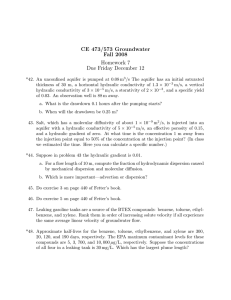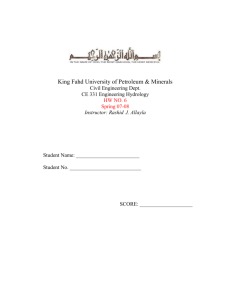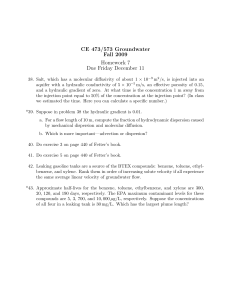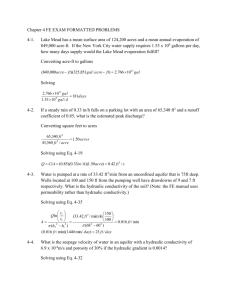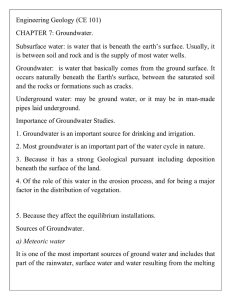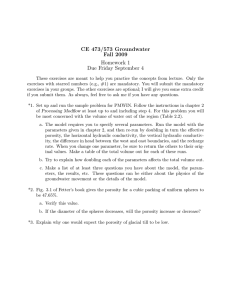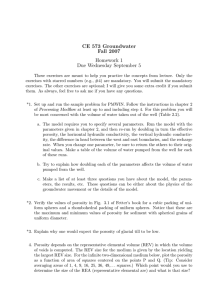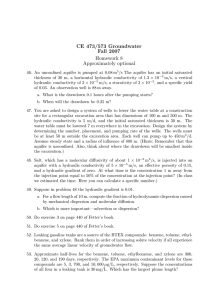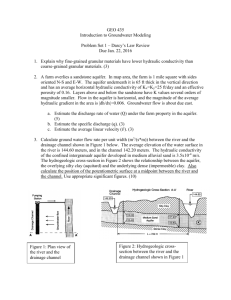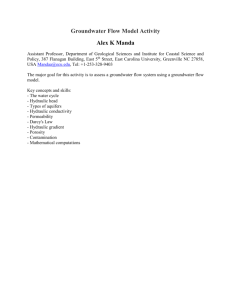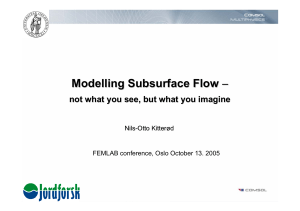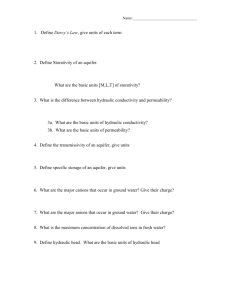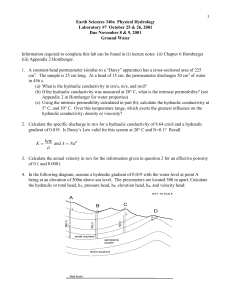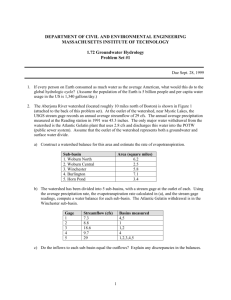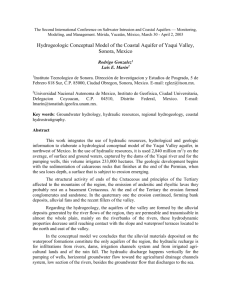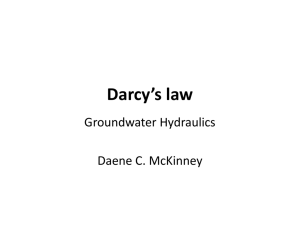Darcy`s Law
advertisement
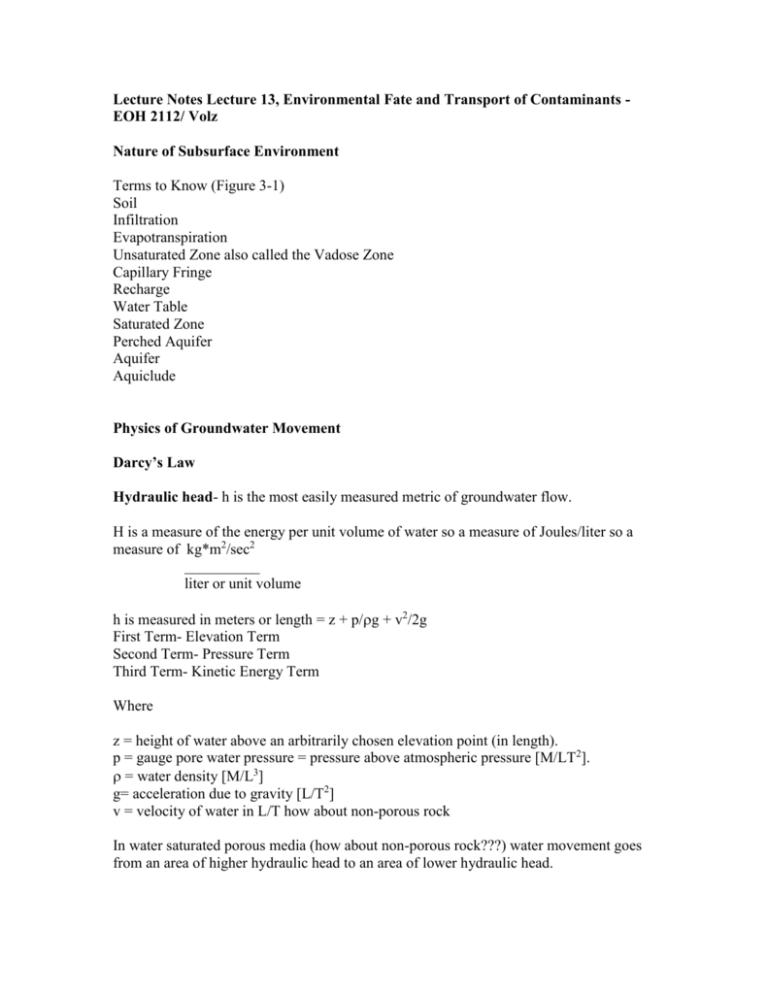
Lecture Notes Lecture 13, Environmental Fate and Transport of Contaminants EOH 2112/ Volz Nature of Subsurface Environment Terms to Know (Figure 3-1) Soil Infiltration Evapotranspiration Unsaturated Zone also called the Vadose Zone Capillary Fringe Recharge Water Table Saturated Zone Perched Aquifer Aquifer Aquiclude Physics of Groundwater Movement Darcy’s Law Hydraulic head- h is the most easily measured metric of groundwater flow. H is a measure of the energy per unit volume of water so a measure of Joules/liter so a measure of kg*m2/sec2 __________ liter or unit volume h is measured in meters or length = z + p/g + v2/2g First Term- Elevation Term Second Term- Pressure Term Third Term- Kinetic Energy Term Where z = height of water above an arbitrarily chosen elevation point (in length). p = gauge pore water pressure = pressure above atmospheric pressure [M/LT2]. = water density [M/L3] g= acceleration due to gravity [L/T2] v = velocity of water in L/T how about non-porous rock In water saturated porous media (how about non-porous rock???) water movement goes from an area of higher hydraulic head to an area of lower hydraulic head. p = gauge pore water pressure = pressure above atmospheric pressure [M/LT2] at the water table or at any other interface between freestanding water and the atmosphere is 0---Why? Kinetic energy term is often neglected for calculation of groundwater head because the velocities are so slow. Hydraulic head differences described by head gradient or hydraulic gradient which is the rate that the hydraulic head changes over distance or dh/dx The average gradient between two points is h/x or the change in head (L) divided by the distance between the points (L). One Dimensional Darcy’s Law- relationship between groundwater flow and head gradient is q = -K * dh/dx Where q =specific discharge in L/T K = hydraulic conductivity in L/T dh/dx = hydraulic gradient in L/L Darcy’s Flux = the amount of water flowing across a unit area perpendicular to the flow per unit time L3/T _____ Area Hydraulic Conductivity K is determined experimentally - Highest for course gravels - 102 cm/sec -Clean Sand10-1 cm/sec -Marine Clay 10-8 cm/sec Need to determine the hydraulic conductivity of materials at depth at a site to be able to determine groundwater flow. To ways: 1. Permeameter test in the laboratory –use a column packed with aquifer material-a known head difference is imposed and measure the specific discharge so that K can be calculated by K = - q * dh/dx and dh/dx is change in height per column length 2. In situ using response of well to pumping (pumping tests) or additions of water (slug tests). To fully describe the transport of water-chemicals in subsurface you need to know its porosity in L3/ L3 n= Vvoids/Vtotal= Vvoids/Vsolids + Vvoids Typical aquifer porosities are .2-.4 Use seepage velocity v =q/n to determine the rate at which chemicals move in the groundwater V=L/T q=-K * dh/dx in L/T and n is the porosity in L3/ L3 Homework ---Problem 1 on page 265 due next Monday Feb 27th

